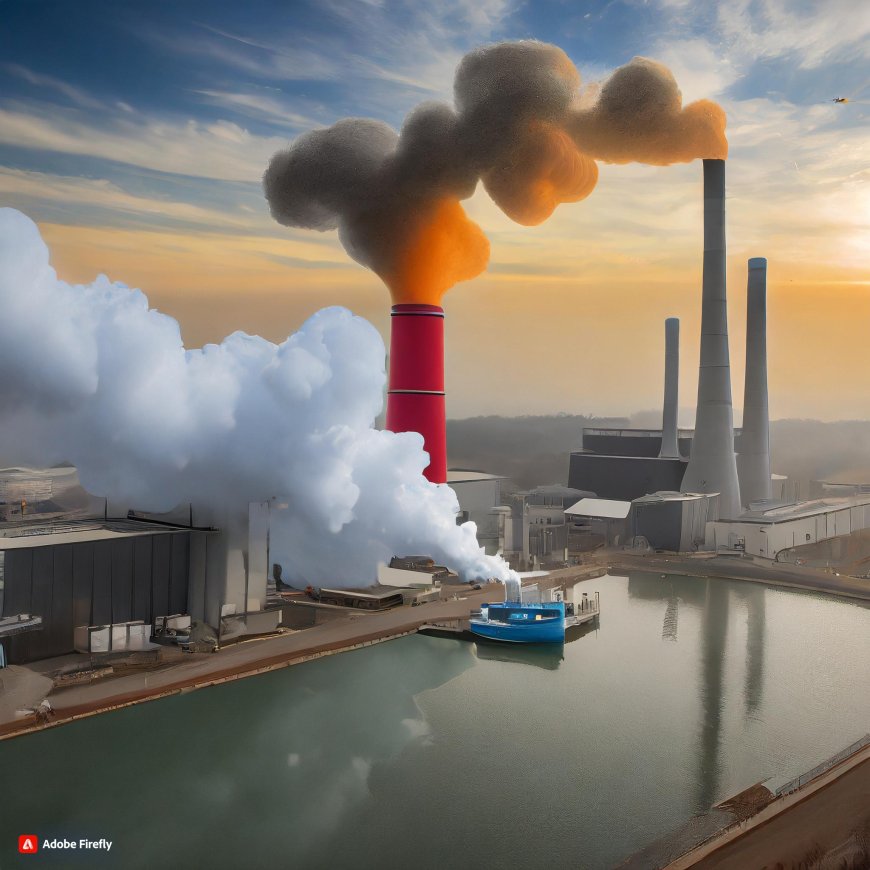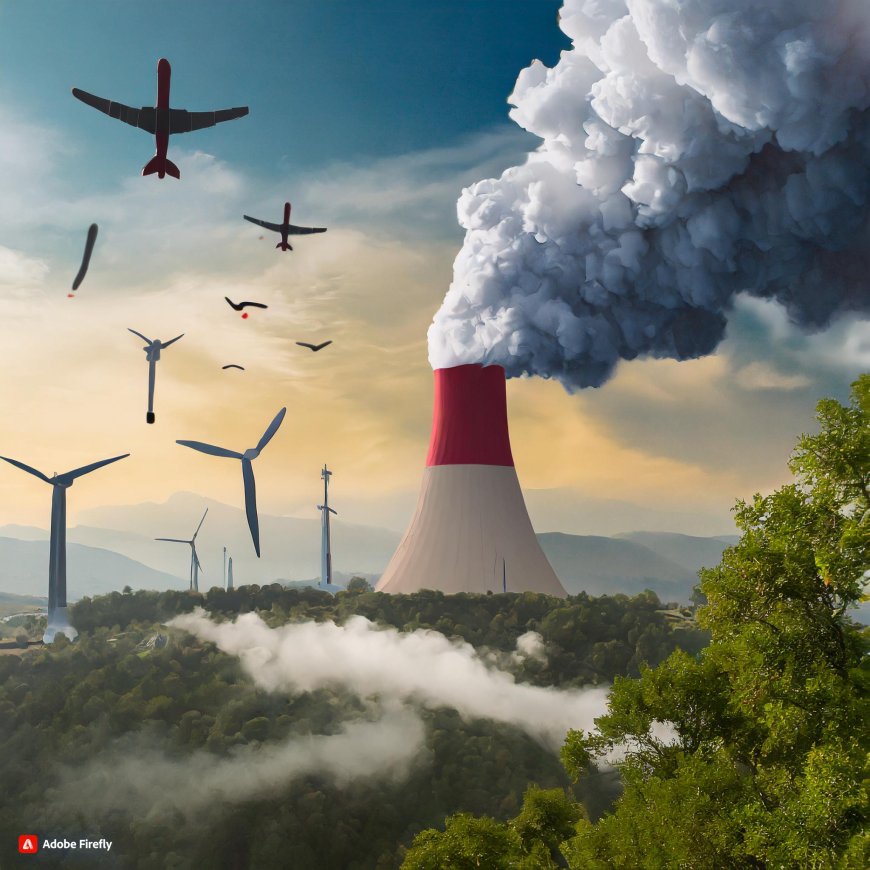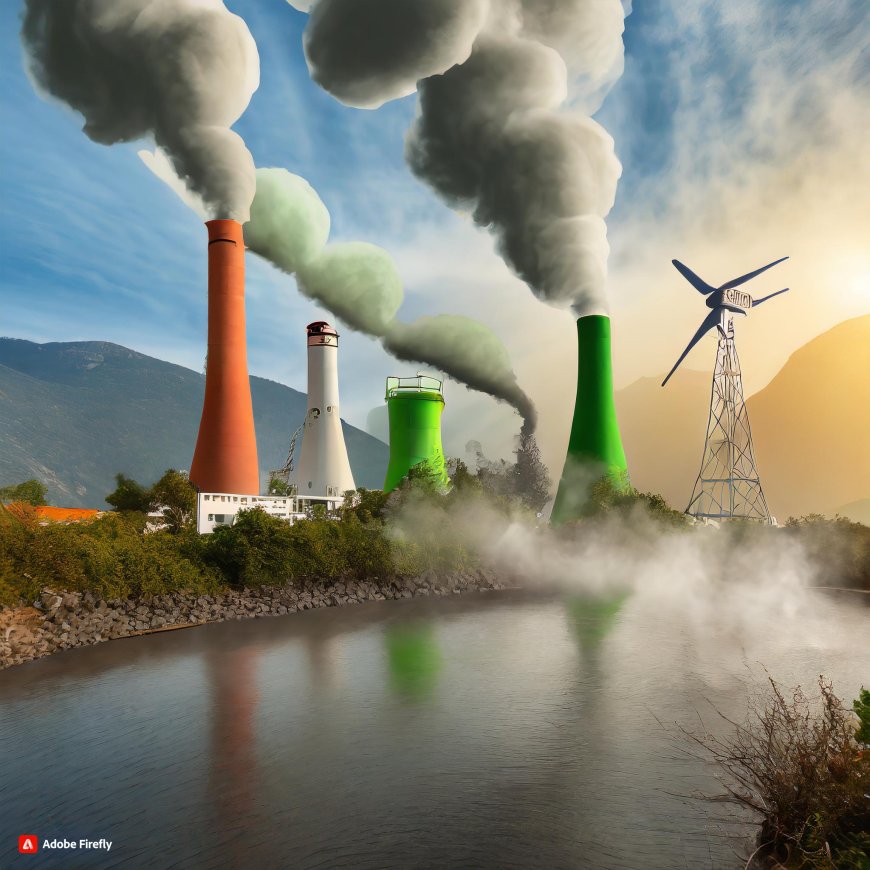Air Pollution: Causes, Effects, and Solutions
Explore the causes, effects, and solutions to air pollution in this comprehensive guide. Learn how industrial emissions, vehicle exhaust, and agricultural activities contribute to air pollution.

Table of content
| 1 | What is Air Pollution? |
| 2 | What Interventions Can We Take Regarding Air Pollution? |
| 3 | Industrial Emissions |
| 4 | Vehicle Exhaust |
| 5 | Agricultural Activities |
| 6 | Air pollution negatively affects an individual's health. |
| 7 | Delving into approaches to Air Pollution reduce. |
| 8 | Green Transportation |
| 9 | Conclusion |
| 10 | FAQs |
As the case with air pollution, this airborne issue gravely affects all of us. From the air we breathe to the habitat we occupy, the effects of frames are far-reaching and substantial. This detailed guide will cover the topic of air pollution where we will look into the reasons it happens, what the implications are and possible solutions. Meanwhile, get ready and let's go on a trip to understand what this dangerous issue, pervasive through our life, consists of.
What is Air Pollution?
Air pollution, in terms, is the environmental unfriendliness caused by excessive pollutants entering the air beyond what should be naturally occurring there. The pollutants may originate from different [sources, e.g. human activities and natural processes.] It is seen from the industrial emission to vehicle exhaust and even natural events such as wildfire, air pollution generates a variety of pollutants exhibiting potential health risk to the human and environment.
What Interventions Can We Take Regarding Air Pollution?
This control process not only involves development of revised regulations and modern technology but also individual commitment. The introduction of stricter emission regulations for industries and vehicles, championing green energy and improving pollution control technologies are some measures that are bound to deter air pollution. Besides, making people alert and therefore, improving their habits concerning sustainability will also considerably help in air pollution reduction.
The principal causes of air pollution are air transportation, heating buildings using coal and petroleum, as well as industrial activities.



Industrial Emissions
Through processes in making materials the industries are great contributors to air pollution, always releasing such pollutants like sulfur dioxide, nitrogen oxides, and particulate matter into the atmosphere. Being emitted to the air, these substances can have serious consequences on air quality as well as on the health of human beings who live in such big cities with high industrialization.
Vehicle Exhaust
Automobiles that run on fossil fuels emanate the perilous gasses like carbon monoxide, hydrocarbons and nitrogen oxides into the atmosphere. Since the quantity of cars on roads progresses unwaning, so does the level of air pollution from exhaust gasses. Convert the fleet to EVs and develop an efficient public transportation system in order to diminish the effect of exhaust emission on air pollution.
Agricultural Activities
Agricultural activities including livestock production and crop growing have been polluted with glasses like ammonia and methane . they create issues relating to quality . Also, powering the application of fertilizers and pesticides further implicates the air's purity through the release of nitrogen oxides and volatile organic compounds. Introduction of disciplines of water-saving agriculture and minimizing doses of fertilizers, which will result in the reduction of pollution from agricultural activities.



Air pollution negatively affects an individual's health.
Air pollution engenders considerable problems for the well-being of people and nature. Contacting airborne contaminants can trigger respiratory ailments, cardiovascular diseases, and bring about preterm death. The group corresponding to the pediatric, elderly and those with underlying health conditions are clearly exposed to the casualties caused by poor air quality. Not only that, air pollution is one of the reasons that substantially affect normal functioning of the ecosystem, endanger wildlife and the strengthening of climate change through the generation of Greenhouse gasses.
Delving into approaches to Air Pollution reduce.
Renewable Energy Sources
Steering from conventional sources such as coal and oil to renewable sources like solar, wind, and hydroelectric power must be the principal option in as much as environmental problems and climate change issues. Although this is the case, these clean energy sources such as hydro power, wind energy and solar energy which emit less or even no carbon dioxide at all can serve as alternative sources of energy which do not hurt the environment hence sustaining the provision of energy without harming the environment at the same time.
Green Transportation
Solutions like encouraging electric car ownership, using public transportation, bicycles and similar means of transportation can decrease a significant amount of air pollution exuded by vehicle exhaust. Investing in infrastructure such as pedestrian and bicycle paths, and favorable changes in urban rail transport, can help address traffic congestion and produce improved air quality in cities.


Waste Management
Adopting a system of adequate garbage management, this can consist of recycling, composting and waste to energy technologies, it may be possible for greenhouse gas emissions to be limited coming from landfills and open dumps. The air quality is really threatened by the landfills and incinerators as in the process many particles of the harmful substances are released into the atmosphere and can result in serious health issues among the nearby communities. So by limiting the amount of waste to these sites we will be effectively preventing respiratory illnesses from air pollution and avoid hazardous emissions from polluting the air we breathe.
Monitoring the Air Quality: Its Role.
The regular surveillance of air quality is the primary step to assessing the level of pollutants in a zone and finding possible health risks. Air quality surveillance stations supervised by Government advocates and environmental bodies collect data on the pollutant levels especially ozone, particulate matter, carbon monoxide, and sulfur dioxide. Through the gathering and processing of this data, the authorities are now prepared to develop effective strategies of air quality improvement and everybody’s health safety consideration.
Public Health Implications
The public health is visibly impacted by the air quality that deteriorates air, and as a result, creating a series of respiratory and cardiovascular diseases. People who live for very long, in polluted air have a chance of contracting either asthma or lung cancer, and also have the possibility of having heart attacks and strokes. Due to the high level of sensibility of children, aged people and those with pre-existing diseases to the harmful effects of air pollution, they are considered to be the most risky group of people. High air pollution is a kind of factor which may relate to a great number of diseases and the great cardiovascular disease is in the first place. Hence, improving the quality of air will lead to considerable health advantages and decrease the load of the disease, which turns into the second problem, on the society.


Dealing with Atmospheric Pollution in Global Terms
International Cooperation
Global pollution is a problem that has no boundaries, the nation states need to collaborate so as to come to a common solution. International agreements, for instance Paris Agreement on climate change and UNFCCC, are among the most critical instruments in enabling collaboration between countries in promotion of improved air quality and emission control. Through cooperation and coordination, countries can exchange the relevant information, produce the common things and follow the good practices to overcome air pollution and minimize the disadvantages in the environment and public health.
Technological Innovations
Technological developments are offering innovative methodologies for the reduction of pollution from the air and from the switch to clean energy sources. The emerging technological solutions cover the area from e-mobiles and emission reduction systems to air and water purification technologies. These solutions can help to combat air pollution and promote environmental sustainability. This promotion of research and development ventures yields to the revolution of technology and microlization of a low-carbon economy.
Conclusion
To sum up, the air pollution problem will not be solved by a single event or force, and thus, it calls for urgent action from all of us in order to tackle this encroaching issue. The identification of the causes, consequences and treatments of pollution leads to one of the possible avenues to achieve a cleaner and healthier environment for the present as well as future generations. However, let’s take action to ensure that air quality will improve and we, hence, will have cleaner air to breathe on better days tomorrow.
FAQs (Frequently Asked Questions)
A major concern is where are the air pollutants?
Industries, cars, and farms are among the most dominant contributors of air pollution in terms of outdoor air emissions, exhausts, and activities.
How does air pollution influence humans?
The condition of air pollution comes from the surplus level of particulate matter (PM) that is released into the atmosphere. Via such processes people can get respiratory illnesses, cardiovascular diseases and other unhealthy conditions, especially if those vulnerable people are on the top.
According to what matter do private parties contribute to pollution control?
One way to do that is by consciously shifting to eco-friendly ways of living, including efficient energy consumption, taking public transportation, and promoting Renewable energy programs.
Is there a government regulation that caters for air pollution or is it up to the masses to find ways of controlling it?
Indeed, governments worldwide have recognized the need to introduce such measures in the form of regulations and policies aimed at limiting such harmful pollutants as the industrial, vehicle and other sources of air pollution.
So what are the ways to look for a major reduction in air pollution?
For the purpose of long-term pollution solutions, to change at least half of electricity to be renewable sources, to spread awareness of environmentally friendly transportation means, and to implement efficient waste management techniques is the proposal.
With answers provided to these questions, our aim is to furnish clarity and knowledge pertaining to the thorny problem of air pollution and equip everyone with the right tools to effectively face this global challenge. Together as one, we will take a stand for the future to keep the quality of our air, ensure the planet's health and that of human beings.
What's Your Reaction?























































